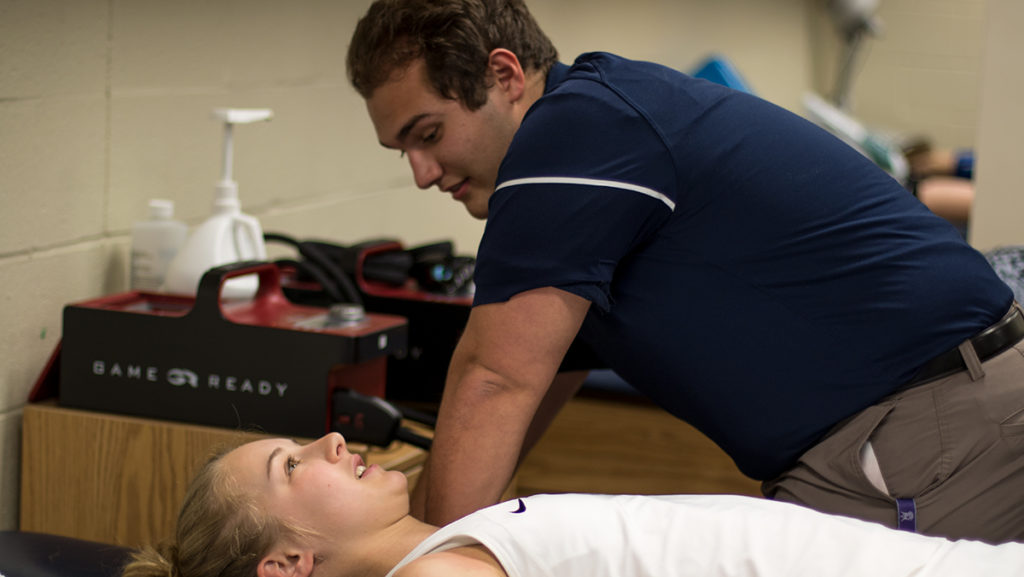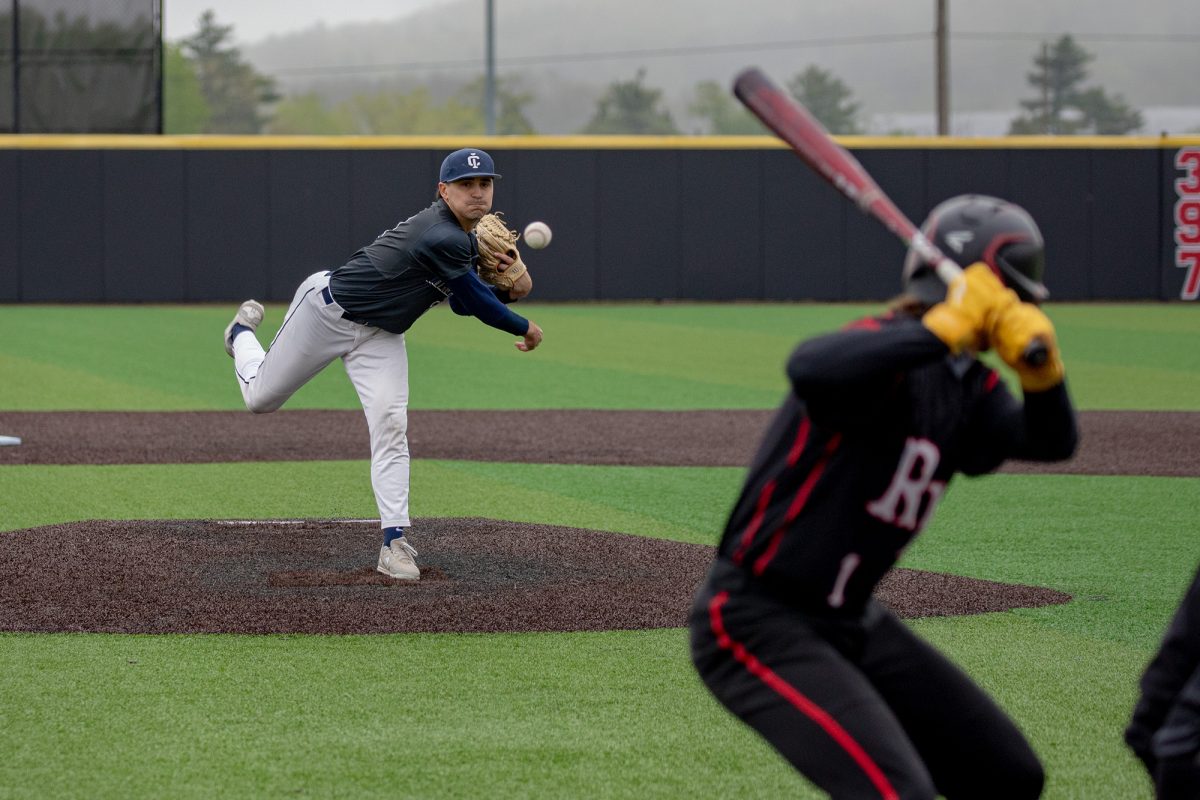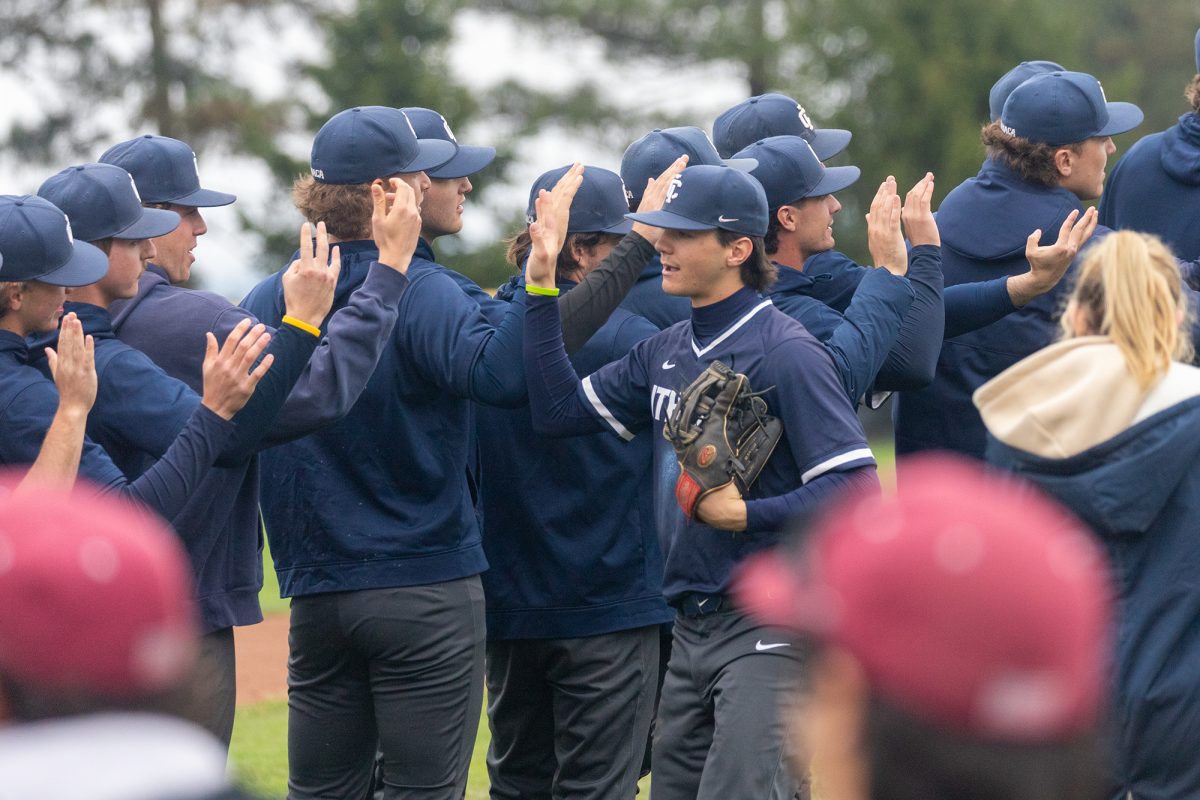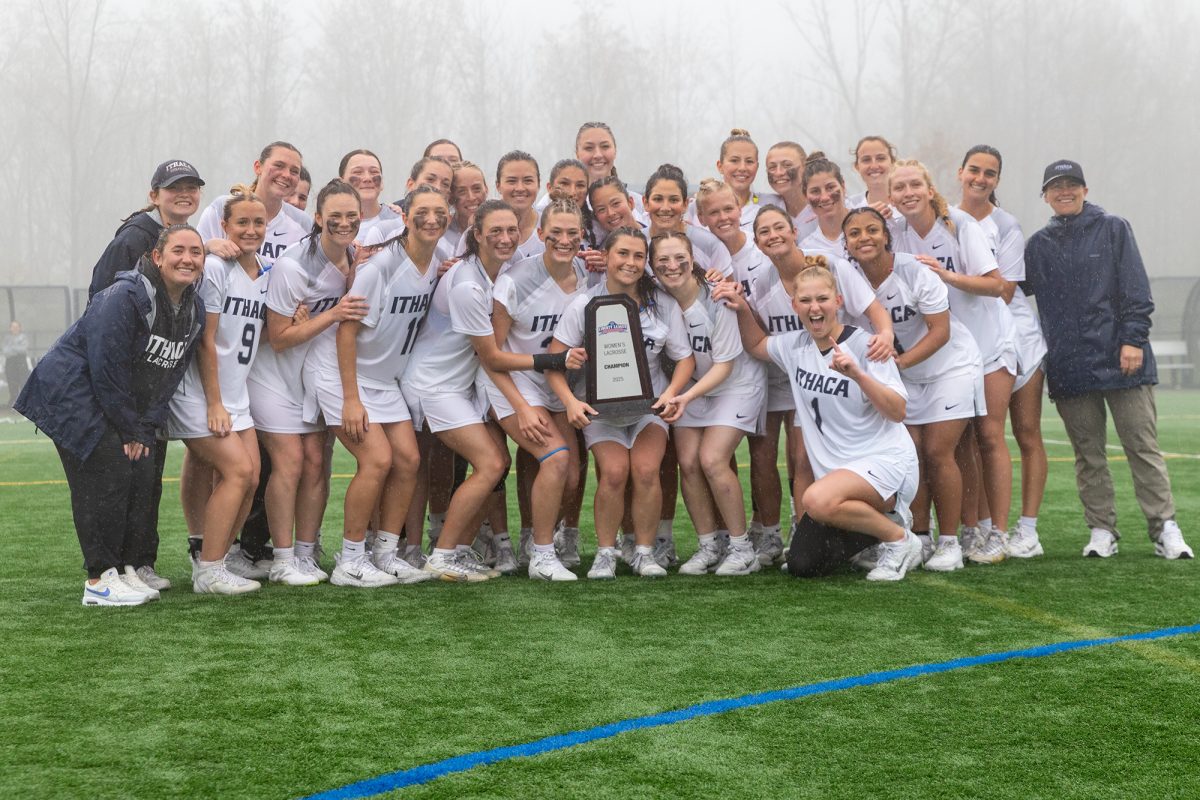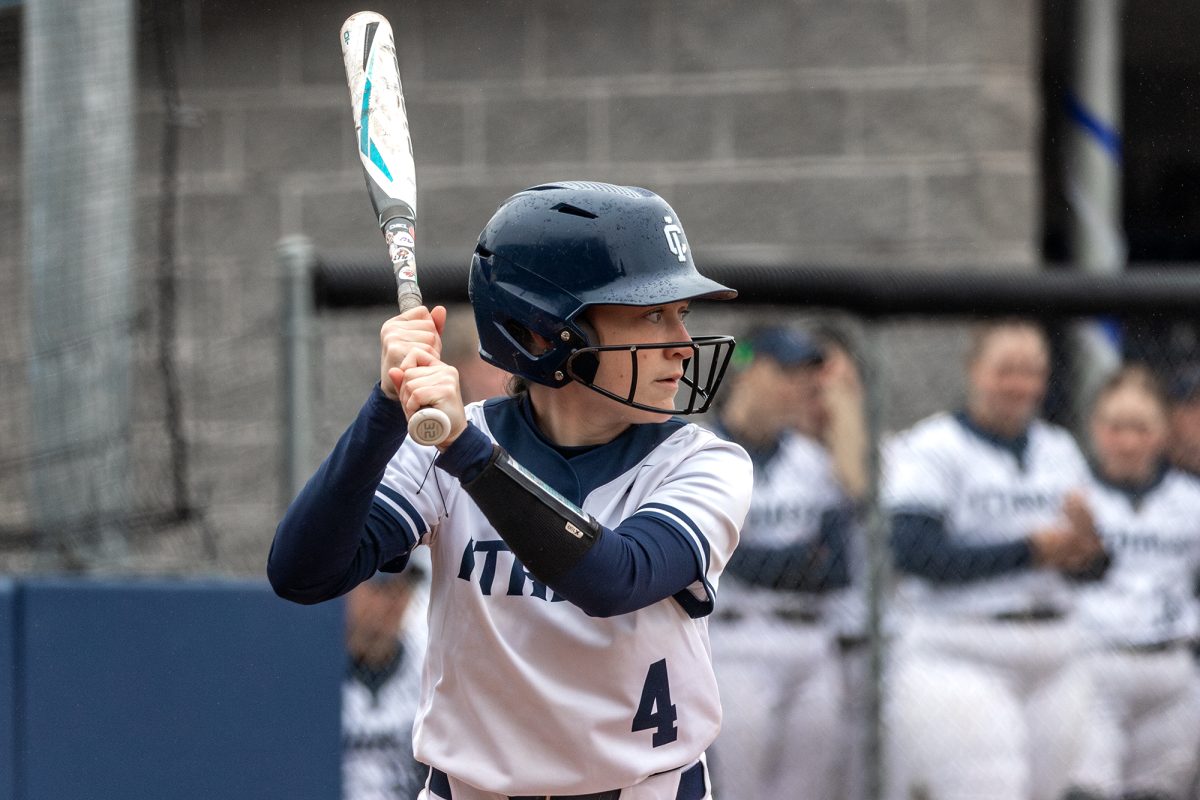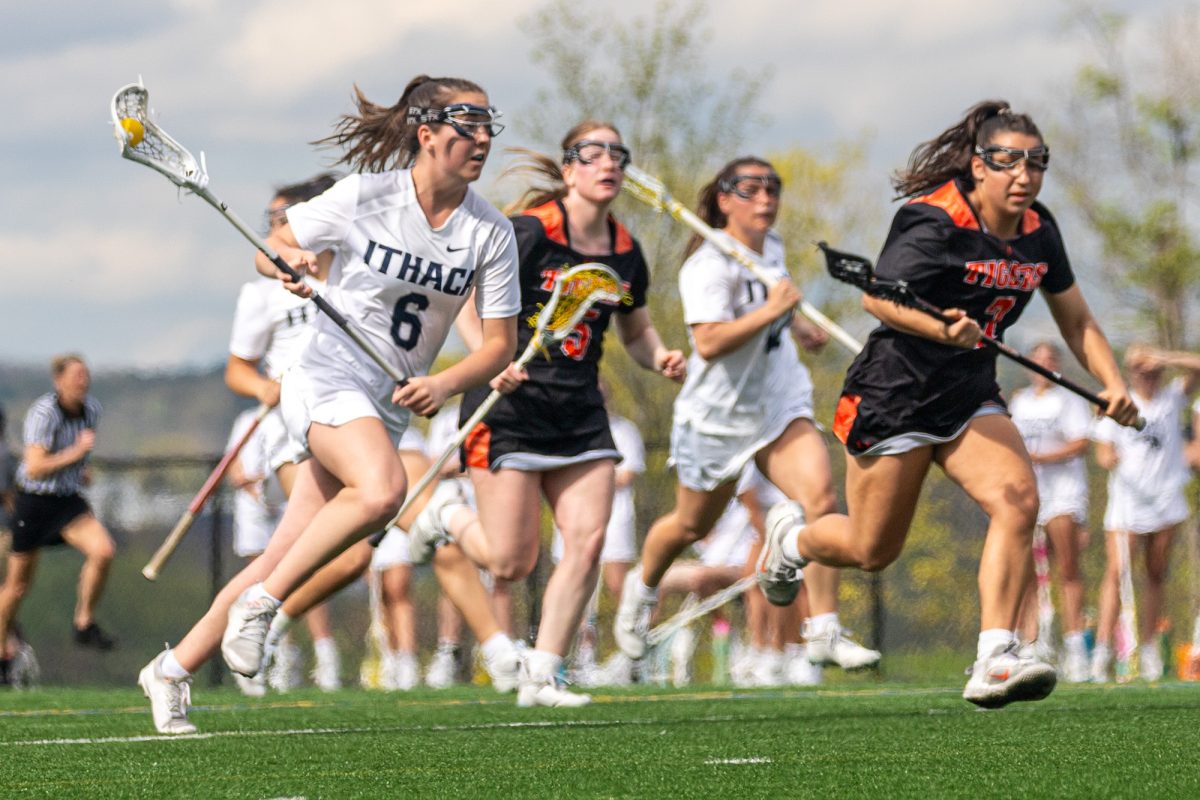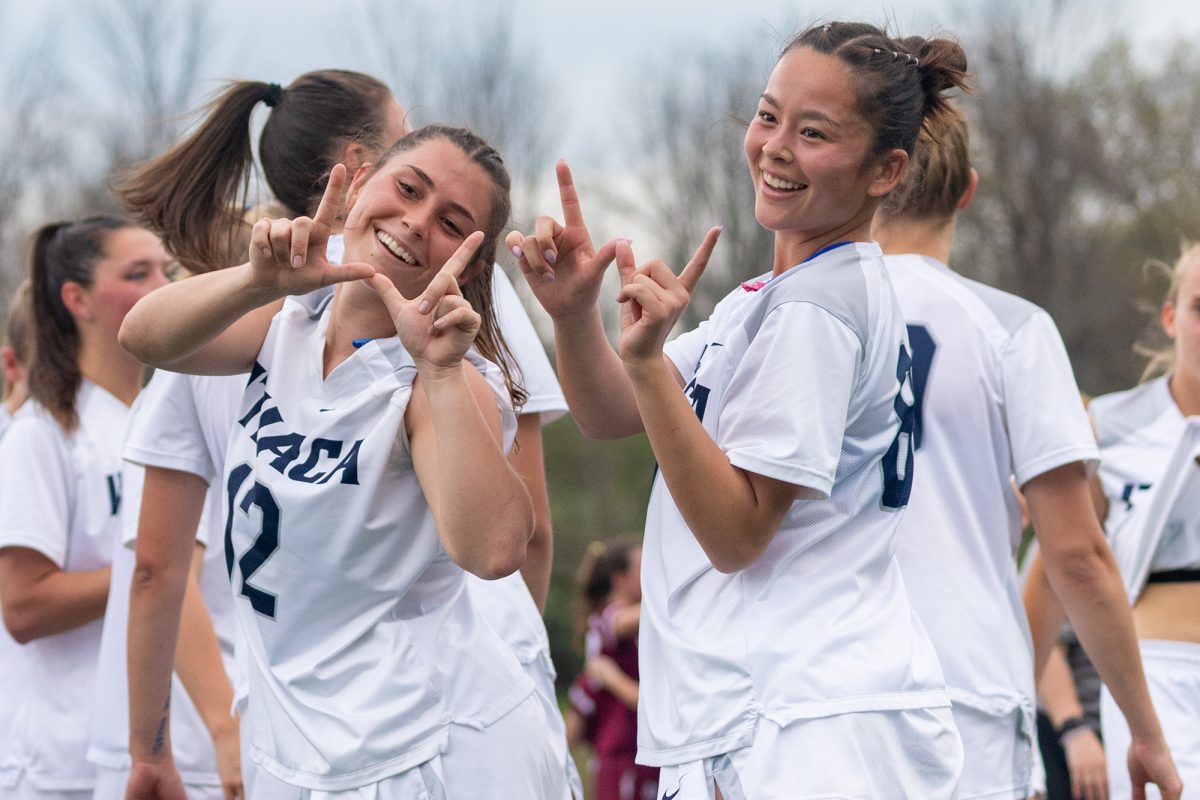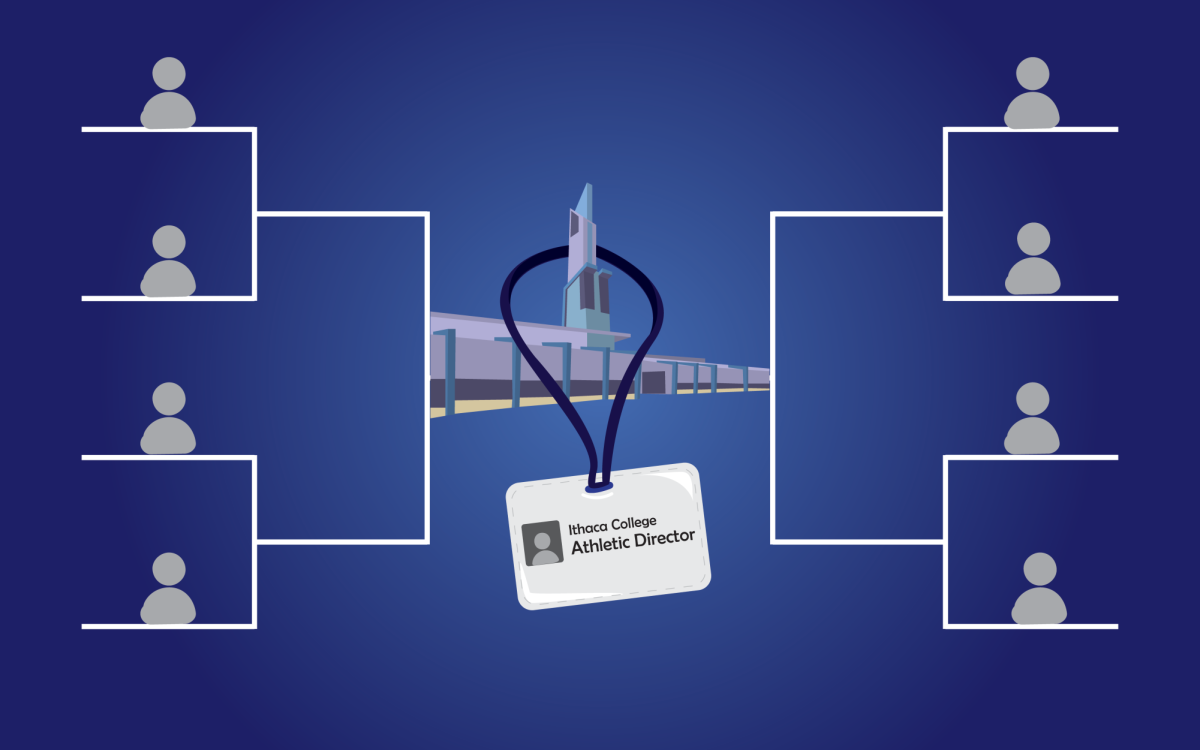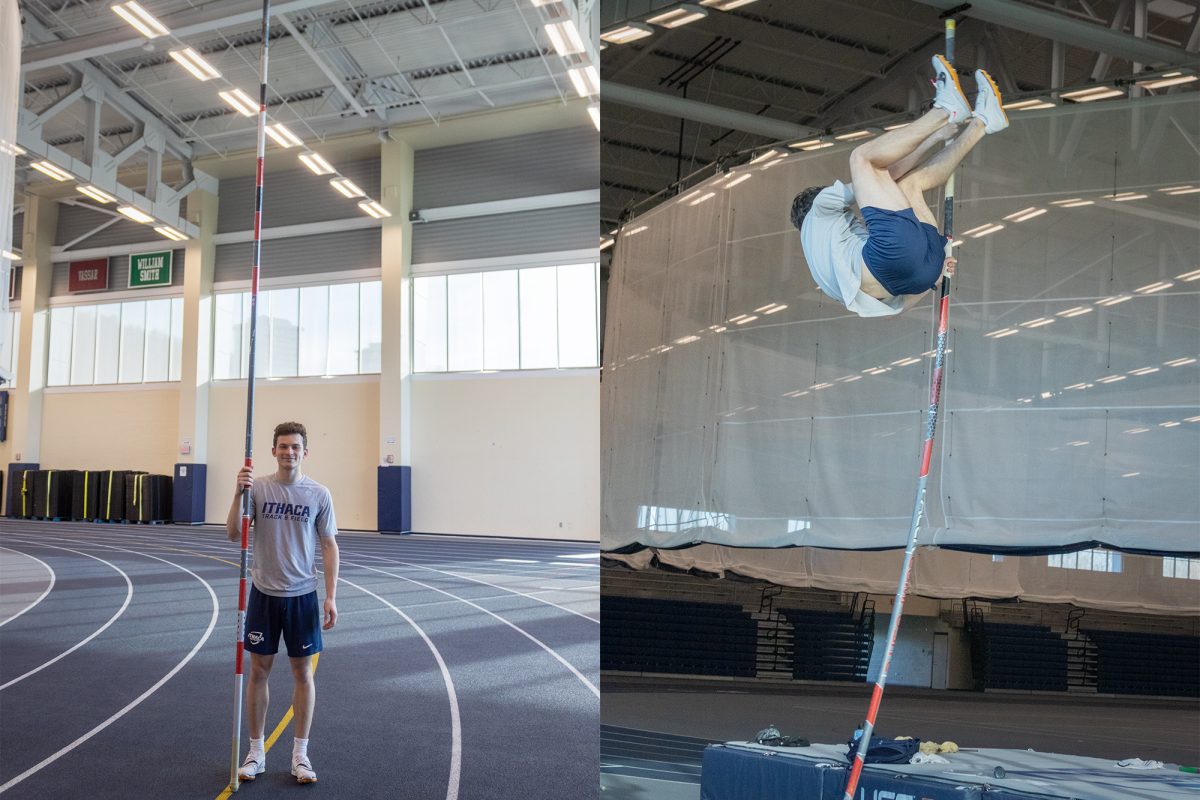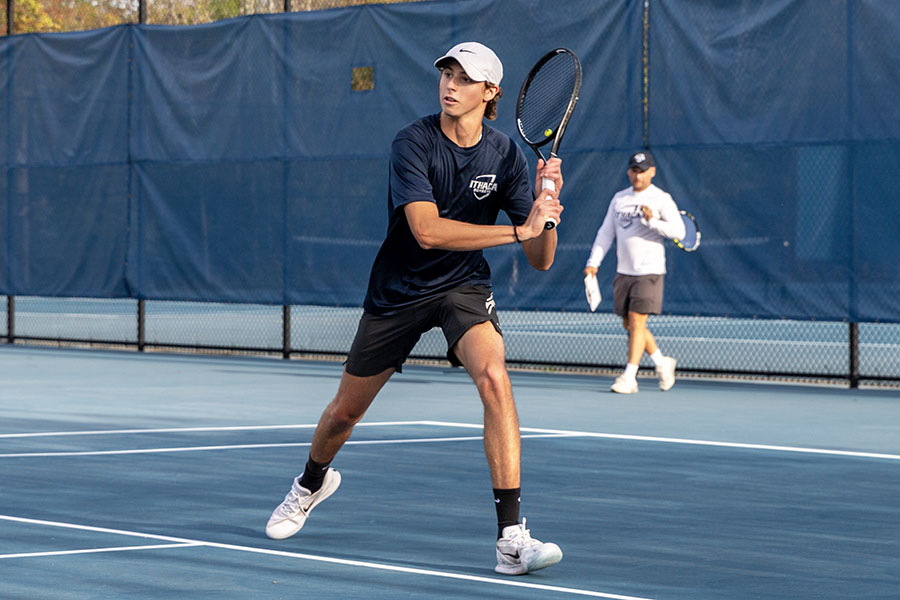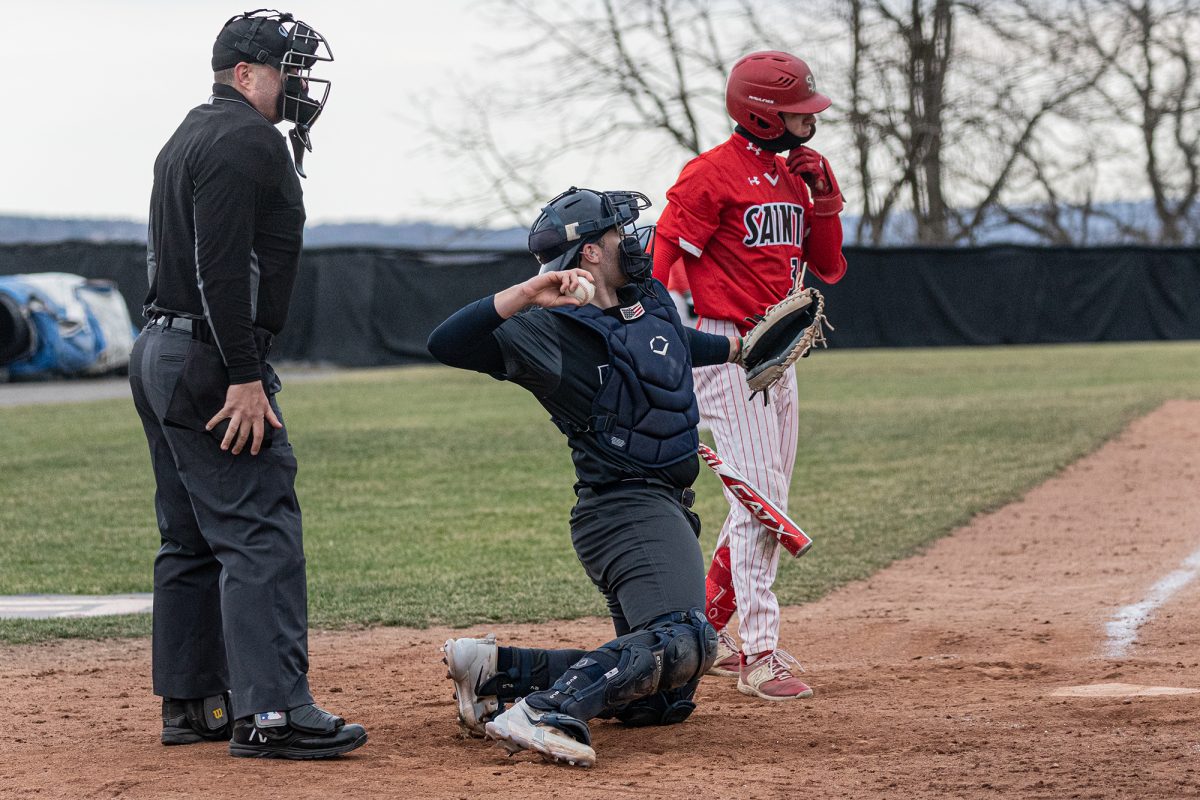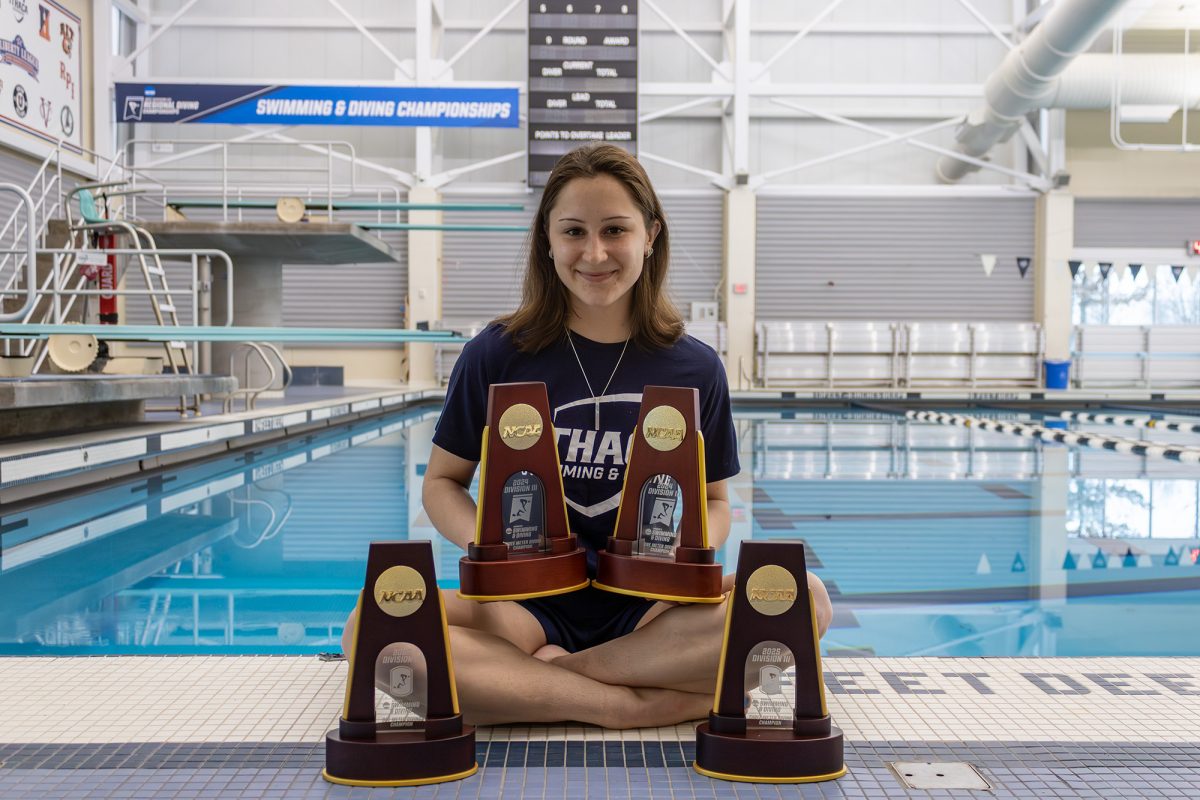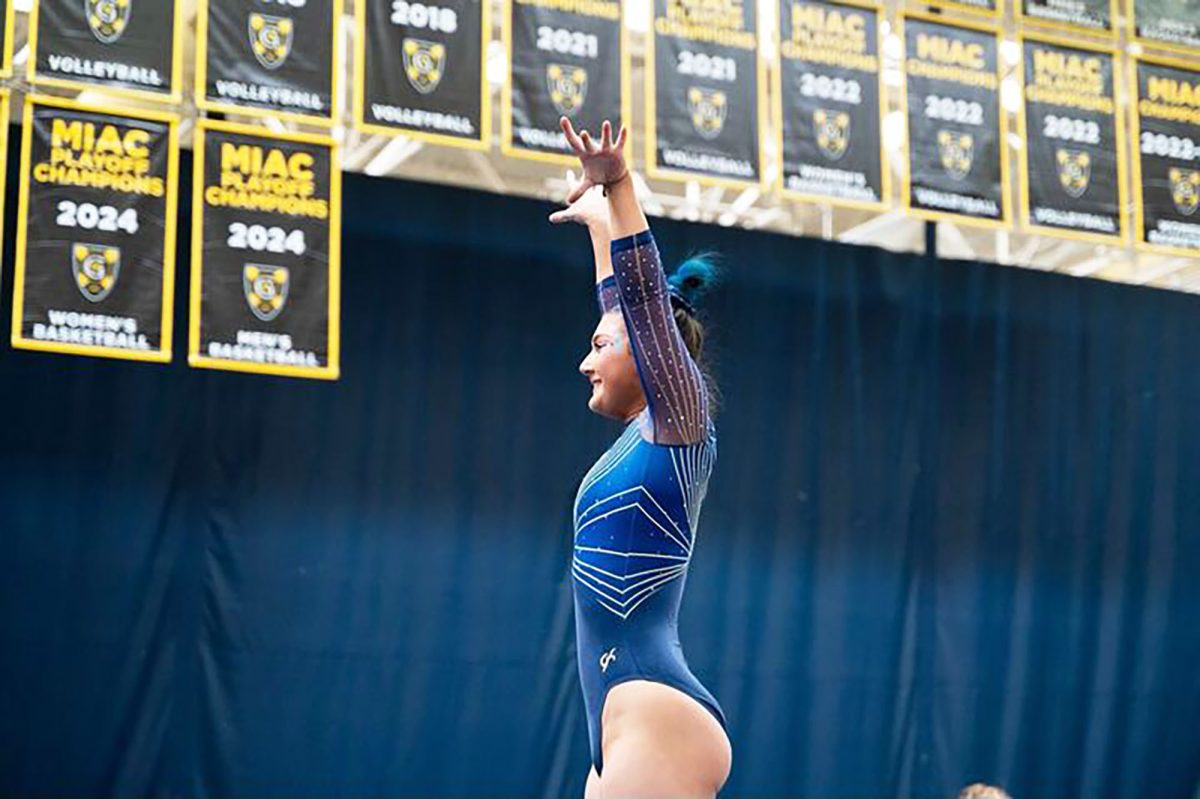Junior athletic training major Michael Caruso withstands the frigid Ithaca weather on the sidelines of the men’s lacrosse game against SUNY Oneonta on March 21, watching attentively for any athlete who may suffer an injury. Should something happen, he is prepared to act promptly to apply what he’s learned from his classes and get the athlete back to playing at full strength.
Part of his knowledge base, as well as his interest in the field, comes from his experience as a lacrosse player himself.
Those who choose to study physical therapy — for which the undergraduate major is clinical health studies — or athletic training or occupational therapy can come from various backgrounds, but most have a background as an athlete and possibly personal experience with injury, using their experiences to further their studies and using their studies to improve their experiences. For these majors, an injury means a learning opportunity and a way to apply what they have learned in the classroom to the outside world.
There are 160 student–athletes in the athletic training, occupational therapy or physical therapy programs, who represent about 20 percent of the nearly 800 athletes on campus. Nearly 30 percent of students in the physical therapy program and 30 percent of the athletic training program are student–athletes, according to Will Rothermel, associate athletic director for compliance, facilities and events.
Caruso, also part of the club lacrosse team, uses his experience and knowledge of lacrosse to assist the varsity players in any injury they come to him with.
“You know what to expect and what they’re feeling,” Caruso said. “The athletes come up to me and say they’ve got a tight hamstring, and I know exactly where they’re coming from because I’ve been there. So because I’ve played lacrosse, I feel as if I’m able to help these players out better.”
Caruso has spent his life working and training in athletics. Using his interest in weightlifting, he researched the human body, and his passion for athletic training began to form.
“I wanted to learn more about the body, and it confused me how I continued to play sports, but I still stayed overweight,” Caruso said. “I would research new ways to work out, and I feel that being an AT has reflected how hard I’ve worked to become healthy.”
Paul Geisler, associate professor in the Department of Exercise and Sport Sciences, said student–athletes have advantages in the college’s athletic training program because at other schools, they might not be able to do both.
“Some athletes, their sport is their identity, and they can’t see themselves quit — it’s part of their social and cultural fiber, so they stick it out and continue with both,” he said. “But most AT programs in the country won’t allow their students to be athletes. If the coaches at IC didn’t embrace this, then it wouldn’t be possible, and that’s why at Division I schools, you don’t see any AT athletes.”
Geisler said he involvement in sports can be a benefit for many athletic training majors, as they have a greater understanding of the human body.
“I think that kids who are athletes grasp some things quicker and the nuances of human motion,” Geisler said. “Perhaps kids who are more athletic themselves can grab some of the nuances better, like why pain occurs somewhere in the body when motion X occurs over and over again.”
This is the case for junior Amber Edwards, who juggles the life of a varsity track athlete and an occupational therapy major.
“I can use my experiences dealing with injuries that have happened to me personally or people I know, and I can apply that to my classes,” Edwards said. “For example, we have to take anatomy, so learning all the bones and the muscles, I can apply those studies to track so I know how to run or hurdle more effectively. I’m more of a visual learner, so a lot of our classes are hands-on. I get to apply those studies to my life on the track.”
Participating in sports can be a blessing and a curse, as injuries tend to go hand in hand for any athlete. A cultural norm is viewing an injury as a negative, but sophomore track and field athlete Andrew Ward said he uses his injury as a way to learn, being a physical therapy student.
“I tore my meniscus my junior year of high school, and I was told I probably shouldn’t run or do anything my senior year,” Ward said. “I went to a PT and was told what happened and the different options we had, and made a really nice program for me to get back into sport, and I was back to running two months later. I loved the way they broke down the sport into the different biochemical components and how they structured an exercise program around that.”
For many of these students, their lives centered around their participation in sports until injury derailed that, and they were exposed to the industry of athletic therapy. Their participation in sports then became a positive advantage over some of their other peers in class, as they gained a deeper understanding of the human body and how one injures it.
“I think I understand the body a little bit better, from, like, a first-person perspective,” Ward said. “Running especially is a very personal sport. It’s really just you and your body and the ground, so I understand how things work. I think some people have no experience with that, so they have to learn it from the textbook whereas most things tend to click for a lot of athletes.”
Sophomore physical therapy student Dean Linkroum surrounds himself with sports and observes the various injuries his teammates suffer from and how they work to get healthy again. His exposure to physical therapy came from the desire to better himself from a shoulder injury and learn from his own experiences so he can apply them to his career.
“I play rugby at Ithaca right now, so I see a fair amount of injuries while participating in it,” he said. “However, I feel as if this helps my studies, as I’m exposed to more ways to treat certain injuries and how to overcome them.”
For Linkroum, the desire to enter into athletic training, occupational therapy or physical therapy programs at the college was the ambition and desire to help and prevent injury for others who suffer.
“I want to be able to give people the ability to continue to participate in the things they love because I know what it’s like to not be able to participate in something you love because of injury,” Linkroum said. “I want to prevent that feeling for anyone.”


